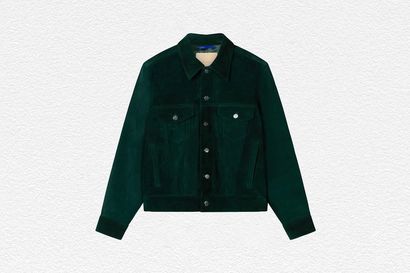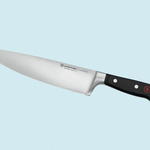Cutting edge: the best knives that’ll sharpen up your kitchen skills
This is the equipment to rely on when working the chopping board
Cooking can be as easy as breathing, once said Fergus Henderson, the lionised chef of London restaurant St. John. Overseeing the pots and pans should, after all, be a gentle frenzy of pleasure for the person at the stove. Work with the seasons, if you can; trust your gut instinct; and focus on the therapeutic feel that playing around with produce can bring about. A good place to start when seeking joy in this department is with the equipment required, and the workhorse for any cook, professional or amateur, is the knife on the rack. A dull blade, contrary to popular belief, is, on the whole, more of a hazard than a sharp one, as blunt edges, especially when cutting through tough surfaces and peels, can invoke shaky movements and, thus, lead to unfavourable slips and accidents.
So, below, we’ve outlined the essential blades that every person should have in their kitchen, a mix of premium and economy options that cover many bases – a perfect breakdown of a chicken, say, or an immaculate brunoise of shallots – when at the chopping board.
The all-rounder: Wüsthof Classic Chef's Knife
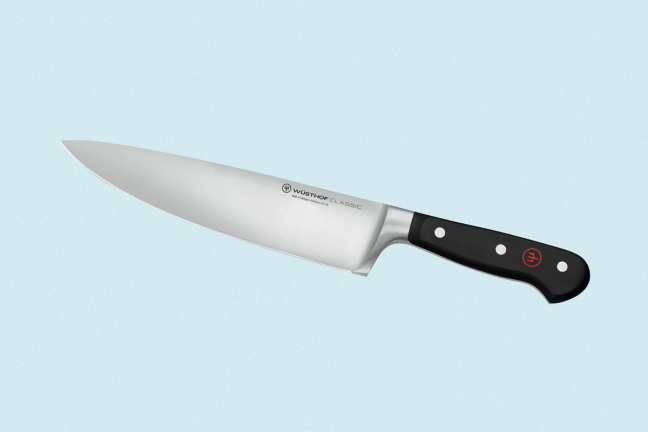
The world of knives is, generally speaking, broken down into two key categories: Japanese designs and German ones. Whereas the former tends to use Damascus steel (known for its hardy properties), the latter prioritises a softer steel, meaning that they’re far less brittle and, therefore, are more durable. Moreover, due to the larger cutting angle of German knives, their blades are easier to sharpen, and there are also more sharpening options you can utilise (sharpening Japanese ones, by contrast, is rather specific), so the maintenance is fairly manageable. Wüsthof is the guiding light in the western-knife department, and its Classic Chef’s Knife has a lovely balance of weight and is a, mind the pun, Swiss army knife of an item – one that can deal with big cuts of meat, heads of lettuce, ripe berries, and pretty much anything else in the fridge and pantry.
The showpiece: Katto Santoku
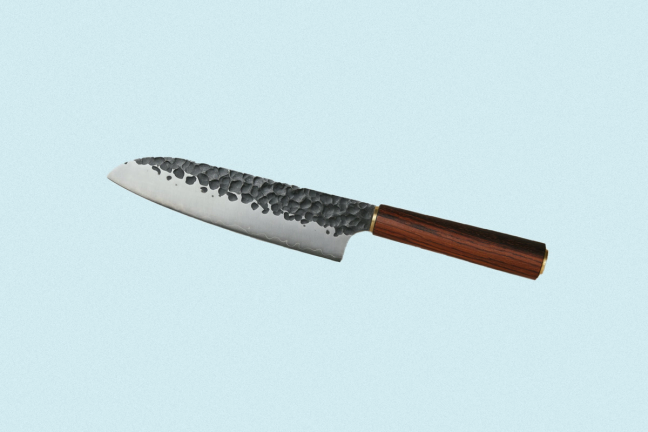
For the home cook – in other words, for someone who isn’t working the line for more than 12 hours a day, prepping to high-grade standards – the durable German knife is the go-to. But, every so often, a flair purchase is too difficult to resist, and having a Japanese-style knife is the culinary equivalent of flashing a little blue Tiffany box. Typically made with extremely thin blades (meaning less resistance when cutting), using one will feel as though you’re slashing through silk, and the hand-forged craft behind many simply elevates the appeal. The handle (often wood) and blade (which typically requires sharpening via a whetstone or honing steel) may demand a lot of upkeep – yet there’s something deeply pleasant about the whole process. The performance of this creation is immaculate – it has a great balance in hand, and the Japanese Aus-10 steel cuts through produce with pure ease and elegance.
The one for country loaves: Victorinox Swiss Classic Bread Knife

Because of its serrated edges, sharpening a bread knife is a pretty impossible task. There are high-price options on the market that go over the £500 region, but the return on investment is pretty low, as the item’s performance – cutting cleanly through loaves – will eventually diminish after a few months. The chef tip is to buy the more economical choices, given that you’ll churn through a fair few in your lifetime, and one failsafe is Victorinox’s offering, which is imbued with that reliable Swiss quality you’d expect. Such knives are also great for piercing the skins of tomatoes, so it’s worth getting some in before summer arrives.
The precise one: Opinel Wooden Handle Paring Knife
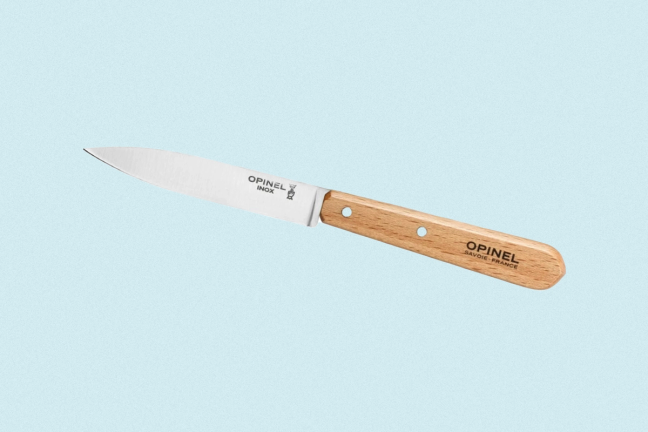
A short blade (usually no longer than 4 inches) without serrations, the paring knife is made for intricate movements, including peeling pears, hulling winter berries, mincing garlic and scoring meat. It calls for fairly concentrated work, so get your inspiration from the Chef’s Table episode on Alain Passard, the doyen of field-to-table cooking, grab your basket of roots and greens, and get to it. Opinel is celebrated for melding reliability with rustic-style designs, and its paring knife is coveted for the beech handle.
The unnecessary one: Global GS GS-10 Cheese Knife
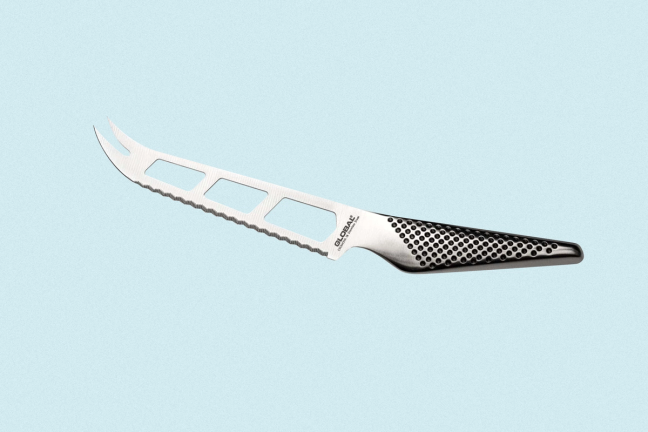
A £110 investment just for segmenting your Pecorino Romano, ogleshield and Brunswick blue – because, why not?
Prefer to eat out? These are London’s best Japanese restaurants…

Become a Gentleman’s Journal Member?
Like the Gentleman’s Journal? Why not join the Clubhouse, a special kind of private club where members receive offers and experiences from hand-picked, premium brands. You will also receive invites to exclusive events, the quarterly print magazine delivered directly to your door and your own membership card.
Further reading

Decant Group: The ultimate destination for collectors and curious drinkers

The best properties in Britain for a bank holiday staycation
